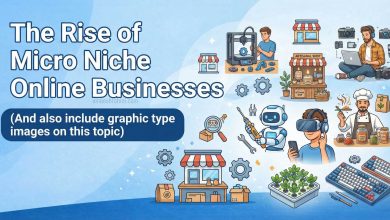Business Success – 3 Strategies to Grow Your Business Without Motivation
Business Succes – Opex CRFM
In the world of business success is often attributed to high levels of motivation. However, relying solely on motivation can be unpredictable and unsustainable over the long term. Instead, businesses can achieve sustained growth and success by focusing on three core strategies: Operational Excellence (Opex), Customer Relations (CR), and Financial Management (FM). Collectively known as Opex CRFM, these strategies provide a structured and reliable framework for driving business growth and stability, independent of fluctuating motivation levels.
Table of Contents
Operational Excellence (Opex)
Operational Excellence (Opex) is the foundation of any business success. It involves optimizing processes, improving efficiency, and ensuring that every aspect of the business is running smoothly. Here are the key components and benefits of achieving operational excellence:
1. Process Optimization
Process optimization involves streamlining business operations to eliminate waste, reduce costs, and improve productivity. This can be achieved through:
- Lean Management: Implementing lean principles to identify and eliminate non-value-added activities.
- Six Sigma: Using Six Sigma methodologies to reduce variability and improve quality.
- Automation: Incorporating technology to automate repetitive tasks and enhance efficiency.
2. Continuous Improvement
Continuous improvement is the ongoing effort to enhance products, services, and processes. This involves:
- Kaizen: Adopting the Kaizen philosophy of continuous, incremental improvements.
- PDCA Cycle: Utilizing the Plan-Do-Check-Act cycle to systematically test and implement improvements.
- Employee Involvement: Encouraging employees at all levels to contribute ideas for improvement.
3. Quality Management
Ensuring high quality in products and services is crucial for customer satisfaction and business reputation. Key practices include:
- Total Quality Management (TQM): Implementing a comprehensive approach to quality management across the organization.
- ISO Certification: Achieving ISO certification to demonstrate adherence to international quality standards.
- Customer Feedback: Using customer feedback to identify areas for improvement and ensure quality standards are met.
Also Read… Zero Cost Business – Best 3 Zero Investment Franchise Business Ideas
4. Resource Management
Efficient management of resources—human, financial, and physical—is essential for operational excellence. This includes:
- Workforce Optimization: Ensuring the right number of employees with the right skills are in place.
- Financial Efficiency: Managing budgets and expenditures to maximize return on investment.
- Asset Utilization: Effectively utilizing physical assets and minimizing downtime.
Benefits of Operational Excellence
Achieving operational excellence offers numerous benefits, including:
- Cost Reduction: Streamlined processes reduce waste and lower operational costs.
- Increased Productivity: Optimized workflows and automation enhance productivity.
- Improved Quality: Consistent quality management leads to higher customer satisfaction.
- Competitive Advantage: Efficient operations provide a competitive edge in the market.
Customer Relations (CR)
Strong customer relations are vital for long-term business success. Building and maintaining positive relationships with customers can lead to increased loyalty, repeat business, and positive word-of-mouth referrals. Here are the essential elements of effective customer relations:
1. Understanding Customer Needs
To build strong customer relations, businesses must understand their customers’ needs, preferences, and pain points. This can be achieved through:
- Market Research: Conducting surveys, focus groups, and interviews to gather customer insights.
- Customer Segmentation: Segmenting customers based on demographics, behavior, and preferences to tailor marketing efforts.
- Data Analytics: Utilizing data analytics to identify trends and patterns in customer behavior.
2. Personalized Communication
Personalized communication helps to build a stronger connection with customers. Strategies include:
- Customer Relationship Management (CRM) Systems: Implementing CRM systems to manage customer interactions and personalize communication.
- Tailored Marketing Campaigns: Creating targeted marketing campaigns based on customer segments and preferences.
- Engagement on Multiple Channels: Communicating with customers through their preferred channels, whether it’s email, social media, or in-person.
3. Exceptional Customer Service
Providing exceptional customer service is a key driver of customer satisfaction and loyalty. Key practices include:
- Responsive Support: Offering timely and effective customer support through various channels.
- Employee Training: Training employees to handle customer inquiries and complaints professionally and efficiently.
- Proactive Engagement: Anticipating customer needs and addressing potential issues before they arise.
4. Building Trust and Loyalty
Building trust and loyalty with customers is essential for long-term success. This involves:
- Transparency: Being transparent about business practices, policies, and pricing.
- Consistent Quality: Delivering consistent quality in products and services.
- Customer Rewards Programs: Implementing loyalty programs to reward repeat customers and encourage continued patronage.
Benefits of Strong Customer Relations
Investing in customer relations offers numerous benefits, including:
- Increased Customer Loyalty: Satisfied customers are more likely to return and make repeat purchases.
- Positive Word-of-Mouth: Happy customers are more likely to recommend the business to others.
- Higher Customer Lifetime Value: Loyal customers tend to spend more over their lifetime, increasing overall revenue.
- Reduced Customer Acquisition Costs: Retaining existing customers is more cost-effective than acquiring new ones.
Financial Management (FM)
Effective financial management is crucial for the sustainability and growth of any business. It involves planning, organizing, controlling, and monitoring financial resources to achieve business objectives. Here are the key components of financial management:
1. Financial Planning
Financial planning involves setting financial goals and developing a strategy to achieve them. This includes:
- Budgeting: Creating detailed budgets to manage income and expenses.
- Forecasting: Projecting future financial performance based on historical data and market trends.
- Capital Allocation: Allocating capital to different projects and investments based on their potential return.
2. Cash Flow Management
Managing cash flow is essential to ensure the business has enough liquidity to meet its obligations. Key practices include:
- Monitoring Cash Flow: Regularly tracking cash inflows and outflows to maintain a healthy cash balance.
- Optimizing Working Capital: Managing accounts receivable, accounts payable, and inventory to optimize working capital.
- Securing Financing: Obtaining appropriate financing options, such as loans or lines of credit, to manage cash flow gaps.
3. Financial Analysis and Reporting
Financial analysis and reporting provide insights into the business’s financial health and performance. This involves:
- Financial Statements: Preparing accurate financial statements, including the income statement, balance sheet, and cash flow statement.
- Ratio Analysis: Using financial ratios to assess profitability, liquidity, and solvency.
- Performance Metrics: Tracking key performance indicators (KPIs) to measure financial performance and identify areas for improvement.
4. Risk Management
Effective financial management includes identifying and mitigating financial risks. This involves:
- Risk Assessment: Evaluating potential financial risks, such as market fluctuations, credit risk, and operational risks.
- Insurance: Securing appropriate insurance coverage to protect against financial losses.
- Contingency Planning: Developing contingency plans to manage unexpected financial challenges.
Benefits of Financial Management
Strong financial management provides several benefits, including:
- Financial Stability: Ensuring the business has adequate liquidity to meet its obligations and sustain operations.
- Profitability: Enhancing profitability through effective cost management and revenue generation strategies.
- Investment Opportunities: Identifying and capitalizing on investment opportunities for growth.
- Risk Mitigation: Minimizing financial risks and protecting the business from potential losses.
Integrating Opex CRFM for Business Success
Integrating Operational Excellence (Opex), Customer Relations (CR), and Financial Management (FM) provides a comprehensive approach to business growth. Here are some strategies for integrating these components effectively:
Aligning Goals and Objectives
Aligning the goals and objectives of Opex, CR, and FM ensures that all aspects of the business work together towards common objectives. This involves:
- Strategic Planning: Developing a strategic plan that incorporates operational, customer, and financial goals.
- Cross-Functional Collaboration: Encouraging collaboration between different departments to achieve integrated goals.
- Performance Measurement: Establishing KPIs that reflect the success of integrated strategies.
Enhancing Operational Efficiency
Operational excellence lays the groundwork for effective customer relations and financial management. Strategies include:
- Process Standardization: Standardizing processes to ensure consistency and efficiency.
- Technology Integration: Implementing technology solutions that support operational, customer, and financial functions.
- Continuous Training: Providing continuous training for employees to enhance skills and knowledge.
Fostering Customer-Centric Culture
A customer-centric culture ensures that all business activities are focused on delivering value to customers. Strategies include:
- Customer Feedback Loops: Establishing feedback loops to gather and act on customer insights.
- Employee Empowerment: Empowering employees to make decisions that enhance customer satisfaction.
- Customer-Focused Innovation: Encouraging innovation that addresses customer needs and preferences.
Strengthening Financial Controls
Strong financial controls support operational excellence and customer relations by ensuring resources are used effectively. Strategies include:
- Cost Control Measures: Implementing cost control measures to optimize spending.
- Investment in Technology: Investing in technology that enhances operational efficiency and customer experience.
- Regular Financial Reviews: Conducting regular financial reviews to monitor performance and identify improvement opportunities.
Continuous Improvement and Adaptation
Continuous improvement and adaptation are essential for sustaining business success. Strategies include:
- Agile Methodologies: Adopting agile methodologies to quickly respond to market changes and customer needs.
- Benchmarking: Benchmarking performance against industry standards to identify areas for improvement.
- Innovation Culture: Fostering a culture of innovation that encourages employees to explore new ideas and solutions.
Conclusion
Achieving business success without relying on motivation involves focusing on three core strategies: Operational Excellence (Opex), Customer Relations (CR), and Financial Management (FM). By integrating these strategies, businesses can create a structured and reliable framework for sustained growth and stability.



